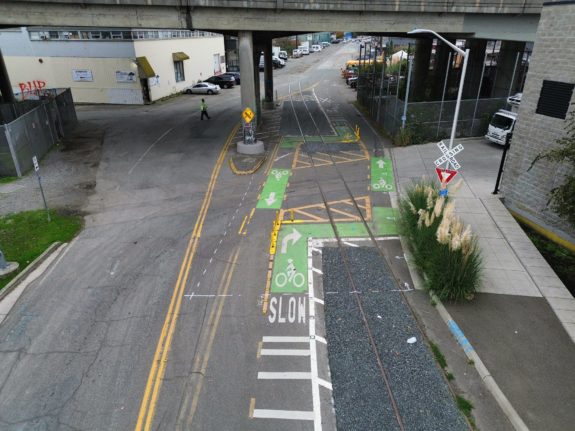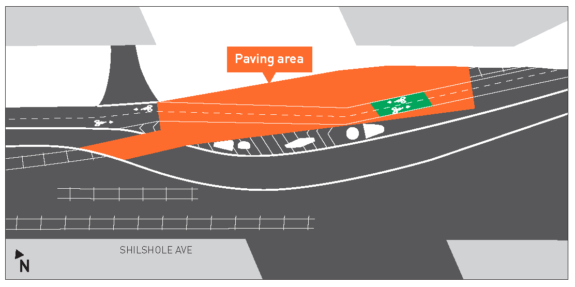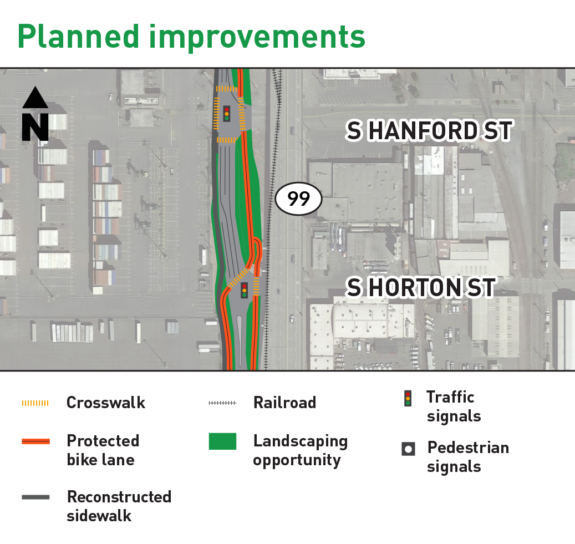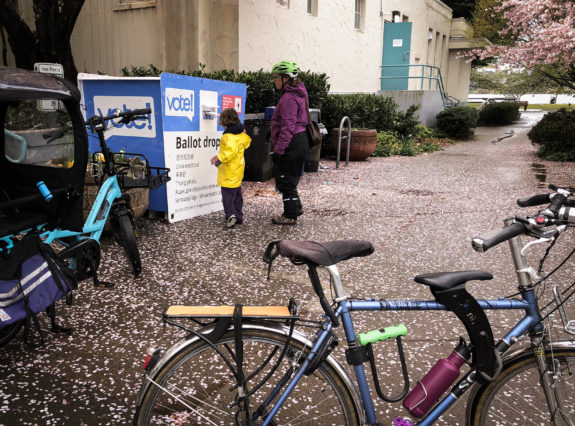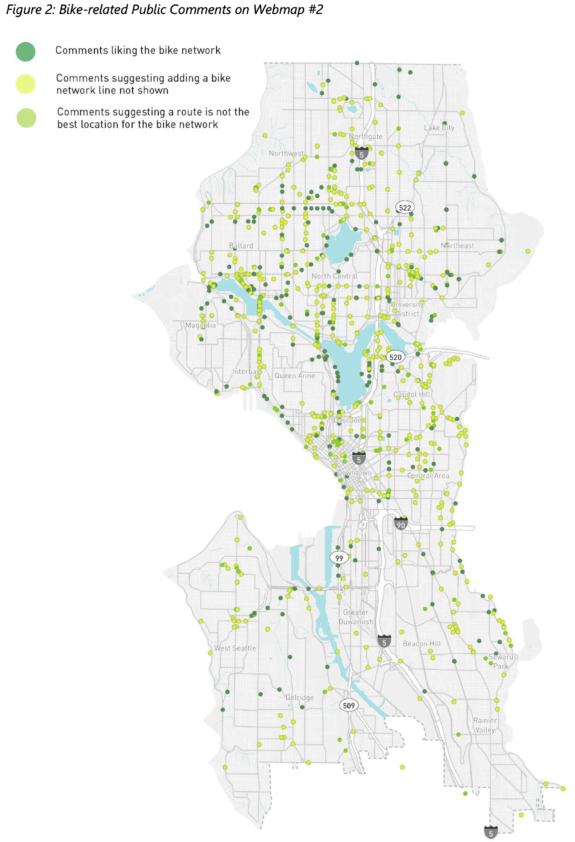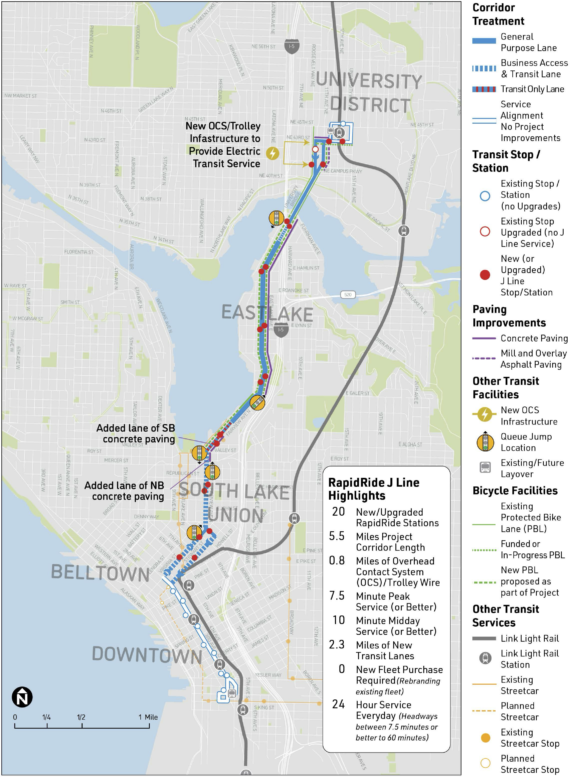
Seattle has completed the design for the RapidRide J project, which includes complete and protected bike lanes on Eastlake Ave. The design even includes protected bike lanes on the block immediately south of the University Bridge, which was lacking protection in an earlier design. Thanks to many years of persistent advocacy, the project is poised to serve as a vital piece of the region’s bike network. The next steps are to put it out to bid, select a contractor, and then begin work hopefully in the summer of 2024. RapidRide bus service could begin in 2027, though the roadway and bike lane work would likely be open before then. The contractor will determine more construction timeline specifics.
This is great news for biking, walking and transit access in and through Eastlake especially but also along part of Fairview Ave N to South Lake Union and along 11th Ave NE in the U District. People have been asking for bike lanes on Eastlake Ave for decades because it is the only direct and complete route option between the University Bridge and downtown. It is also the main street for the Eastlake neighborhood, and the lack of a safe and comfortable biking space makes it difficult for people to bike to businesses there.
This news is also a clear sign that the erratic efforts by a slim majority of the Eastlake Community Council, which included ousting 40% of their board members because they supported the RapidRide project, have not been successful at changing the city’s intention to build this project as designed. They were, however, successful at destroying their organization’s reputation and legitimacy. I’m not privy to all the workings within the ECC, but it seems news of the ousting was not received well among the larger membership. Council President Detra Segar, who led the ouster, is no longer on the Board. She announced that she would not seek another term in the Fall 2023 issue of The Eastlake News (PDF) following a tepid defense of her failed efforts to oppose the RapidRide project. Meanwhile, one of the ousted members, Judy Smith, penned an op-ed in the Seattle Times that does a great job acknowledging the changes the neighborhood is being asked to accept while making the case that it will be worth it. Can you imagine kicking a thoughtful volunteer like this off your community board?
This is a top priority bike connection that will improve bike mobility for the whole region, but it is also an improvement for the neighborhood. Most of the on-street parking will be removed along Eastlake Ave, which is a big change, but the project will also bring major benefits. Folks are being asked to make a leap of faith here and believe that a more walkable and bikeable street with better transit service will make up for the decrease in parking. Changes like these always face skepticism. But Eastlake is a neighborhood that has been severely harmed by car infrastructure built primarily for the benefit of people outside of Eastlake, and the roar of I-5 overhead is a constant reminder of this. But despite all this, Eastlake has long had a strong base of residents who get around on bike thanks to its proximity to so many major employment and destination centers. It’s long past time for an Eastlake Ave built for the people who actually live there, not just people driving in or through from somewhere else.
(more…)
